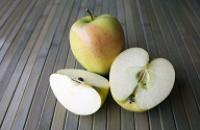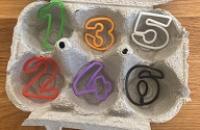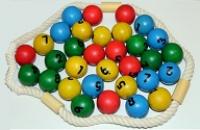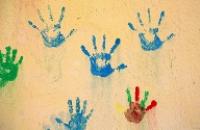Halving
Solving problems





Children often enjoy finding things that are the same.
Adults could ask children to find half of lots of different things, quantities and collections.
The Activity
With a playdough cookie, pose a story problem about having to share it with a friend. How could you do this?
Cut or break it into two pieces and keep the bigger 'half' yourself. Ask the children what they think about this.
Present a range of materials such as paper shapes, string and bananas. Challenge children to halve them and then discuss and display the results.
Encouraging mathematical thinking and reasoning:
Describing
What do your halves look like?
How did you make the halves?
Reasoning
How do you know they are halves?
How can you check they are the same size?
What can you do if you get the wrong number? What if you don't have enough or have too much?
Opening Out
What if you have to halve a box of four cakes? A collection of pennies?
What if you have to halve a length of gold ribbon? A bottle of drink?
Is there another way to fold a square of paper in half?
Recording
Can you put something on paper to show what your halves look like?
Can you put something on paper to show how you know that these are halves?
How do you write half?
The Mathematical Journey
Counting and cardinality:
- using counting to check that both amounts are the same
Matching numerals and amounts:
- selecting numerals to match the numbers involved
Subtracting:
- predicting the result of taking away one number from another
- using the inverse addition facts, e.g. "Half of ten is five, because five and five make ten"
Dividing:
- understanding that dividing by two results in two equal parts - explaining this as 'same' or 'fair', or justifying by matching amounts
Measures:
- awareness of aspects such as length, volume, weight, area
- comparing by estimating or directly, or using measuring tools such as identical containers or balance scales
- explaining how they know that the halves are the same amount
Development and Variation

Encourage children to find halves of:
- 2D shapes (area) by drawing lines or folding paper.
- 3D shapes (volume) by cutting e.g. fruit and playdough.
- Lengths e.g. ribbons, strips of paper - folding and cutting.
- Weights e.g. playdough - checking with balance scales.
- Volumes e.g. water - pouring into two identical containers.
- Numbers of items e.g. pennies, jewels, pegs on pegboards.
- Numbers of structured materials e.g. Unifix sticks, Numicon, Cuisenaire.
Make a display of halves.
Where does half go on the number line? Make an 'ages' line from birth to 20, for children and siblings, to include half years e.g. one and a half, four and a half...
Use tablets to halve pictures, and use mirrors to halve (and double) pictures.
Resources
- 2D shapes, folding paper
- Ribbons
- Playdough, knives, scales
- Water, jugs, identical containers, mirrors
- Items e.g. pennies, jewels, pegs on pegboards
- Structured materials e.g. Unifix sticks, Numicon, Cuisenaire
Download a PDF of this resource.
Acknowledgements: Claire Christie, Annabel Bennet

